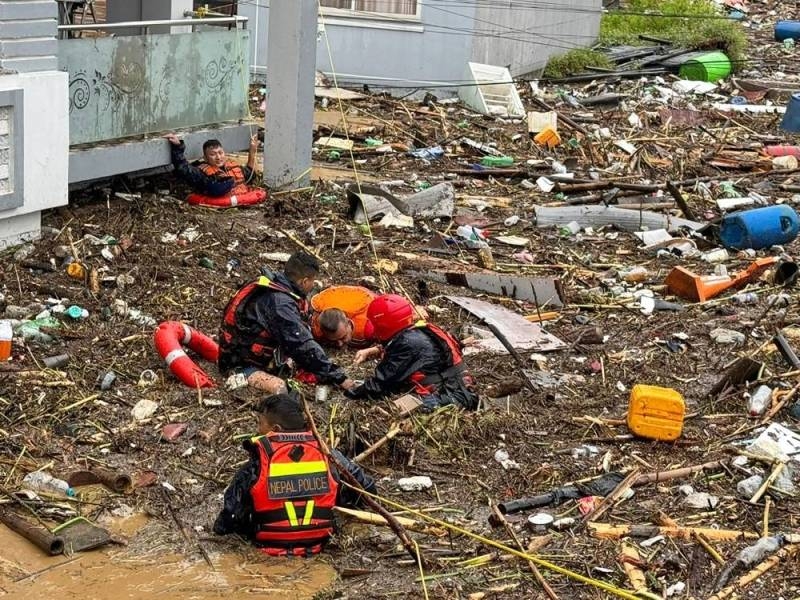
The Tustin Unified School District is asking voters to approve a property tax increase to fund $261 million in renovation and repair projects. At least 55% of voters need to approve Measure J for it to pass. Official title on the ballot: Tustin Unified School District, Classroom Repair/Safety/Quality Education Measure A "yes" vote means: The district can borrow $261 million to construct new buildings, repair and renovate existing public schools.
A "no" vote means: The district cannot borrow $261 million to construct new buildings, repair and renovate existing public schools. City of Santa Ana City of Irvine Orange County State and federal races Jump to the full Voter Game Plan for dozens more races ▶ The Tustin Unified School District serves about 21,000 students across 29 schools. The district wants money to repair and upgrade multipurpose rooms and science labs; fix roofs, plumbing, and electrical systems; improve school safety and security; and remove asbestos and lead, among other things.
School districts rely on voters to approve statewide and local bonds to pay for repairs, renovations, and new construction. This year, Tustin voters will decide whether to support one of each: the district’s Measure J and the statewide Proposition 2. (We’ve got a voter guide for that one, too .
) A bond is basically a loan that a school district takes out, and which property owners in that school district pay back through property taxes. If at least 55% of voters approve Measure J, the Tustin Unified School District can issue up to $261 million in bonds to finance specific school facilities projects. LAist asked the district to name its top priorities for bond funding, but representatives have yet to respond.
The district estimates the bond would cost property owners that live within the school district's boundaries an average of $30 per $100,000 of assessed value. There’s also a possibility that Tustin Unified School District could get additional state funding if Prop. 2 passes.
Districts cannot spend bond money on employee salaries and are required to commission independent audits of bond spending. Research links higher student achievement to better quality schools — it’s easier to learn in clean, climate-controlled, well-lit classrooms. In California, there’s no dedicated stream of funding to support the upkeep of the 10,000 public K-12 schools attended by 5.
9 million students. The majority of the money schools receive from the state every year supports students, staff salaries and other day-to-day expenses. Throughout the state, 38% of K-12 students go to schools that do not meet the minimum standard to be considered clean, safe, and functional.
If the state and local measures fail, the need for funding will remain. “Those buildings are not going to magically renovate themselves while we're waiting for a better bond,” said Sara Hinkley, the California program manager at the Center for Cities + Schools at UC Berkeley. Several local educators and residents submitted an argument in favor of the bond to the OC Registrar.
Read more: The lottery does contribute money to public education — Orange County alone has gotten nearly $3.6 billion since 1985 — but as revenues ballooned in recent years, school funding stagnated. When California voters approved the creation of the lottery, the law required 34 cents of every dollar to fund education.
In 2010 lawmakers changed the rules giving the lottery the mandate to “maximize” funding for education. Now there are bigger jackpots, but fewer dollars for schools. A 2018 LAist investigation found the lottery’s contributions had dropped to 23 cents per dollar.
And in 2020, the California State Auditor found the lottery “ has not provided required funding to education ” and shorted schools tens of millions of dollars. Critics of bonds often say the cost to property owners is too high and question why school districts with declining enrollment need money for construction when they’re serving fewer students. The Howard Jarvis Taxpayers Association is a frequent opponent of state and local school bonds.
The nonprofit is dedicated to upholding Prop. 13, the 1978 constitutional amendment that limited changes to California property taxes. “We think bond financing has its place, but it should be judicious because it raises property taxes at the local level,” said Susan Shelley, HJTA’s vice president of communications.
The Association has not taken a position on specific local bonds other than LAUSD’s $9 billion Measure US (no) and on Prop. 2 (also no). Shelley said voters weighing school bonds should carefully consider how the school spent previous bond funding and the plans for future projects.
“You should have confidence that the priorities are right,” Shelley said. “And if they're not, say no and make [the district] come back to you with a better plan.” No individual or group submitted an argument in opposition to the bond to the O.
C. Registrar. State law lays out several accountability measures for local school district bonds, including: While districts identify projects that could benefit from improvements, that list is not a guarantee of which projects will be funded.
There are often years of community meetings, design, and permitting between the passage of a bond and the start of construction, though minor renovation projects could be completed sooner. A bond is basically a loan. The bond authorized by Measure J would be paid back — with interest — through local property taxes.
Before you read more, we wanted to take a moment to tell you about our mission here at LAist, and why we're so dedicated to helping you get ready to vote. In the lead-up to this important election, our hard-working reporters and editors spent hundreds and hundreds of hours researching and writing these detailed guides and fact-based resources. We invested that time because we're here to help you vote confidently and make your community a better place.
But we cannot do this essential work without your help. We rely on donations from readers like you to stay independent, which keeps our nonprofit newsroom strong and accountable to you. At a time when the need for local journalism has never been greater, many newsrooms are facing cutbacks, including LAist.
Member support — your support — is what will sustain a free press in Southern California. LAist’s mission is to be here for you, so please be here for us now with a donation to power our trusted local reporting. Step up right now and make the choice to give.
Because that’s exactly what it is — a choice. It's choice with consequences. If readers do not choose to step up and donate, the future of fact-based news in Southern California will not be as strong.
No matter what happens in the world, LAist will remain a voice you know and trust. Thank you for your generous support. Sincerely,.














